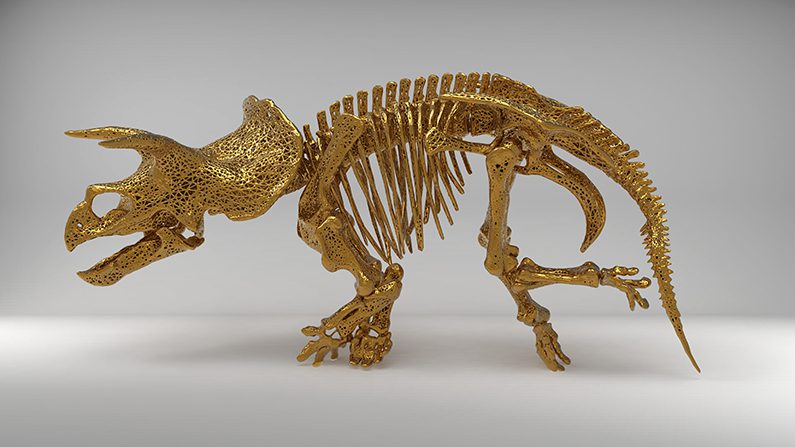Artist Amy Karle – one of the most influential women in the 3D printing industry today and one of the BBC’s 100 Women – wants to introduce us all to an old friend of hers named “Hatcher,” a 66-million-year-old Triceratops skeleton in the National Museum of Natural History who made history as the first “digital dinosaur”.
The introduction across the ages was made possible with the aid of HP’s 3D Printing & Digital Manufacturing organization and HP Labs. Karle used 3D scan data of a fossilized Triceratops skeleton from the Smithsonian Digitization Office as the foundation for a series of artwork, each intended to imagine novel forms based upon extinct species to explore “hypothetical evolutions through technological regeneration.”
The resulting work – Morphologies of Resurrection – is represented in six finely detailed skeletal sculptures. Displayed under glass, the collection evokes the golden era of natural history museums (and perhaps the age of cabinets of curiosities), “specimens and relics” investigating the relationship between structures that once served creatures of eons past for the purpose of finding application for future forms using their framework of stability, flexibility, and strength.
Additionally, Karle created three other 3D sculptures from biocompatible polyamide, a trio of cast sculptures of Hatcher conceived in various forms finely detailed in cellular and scaffold patterns, each uniquely painted in gold, copper, and silver iterations. As such, one can consider Karle’s sculptures of Deep Time and The Far Future as Triceratops v2.0.
Source: Design Milk
To read the full article, please click here.

